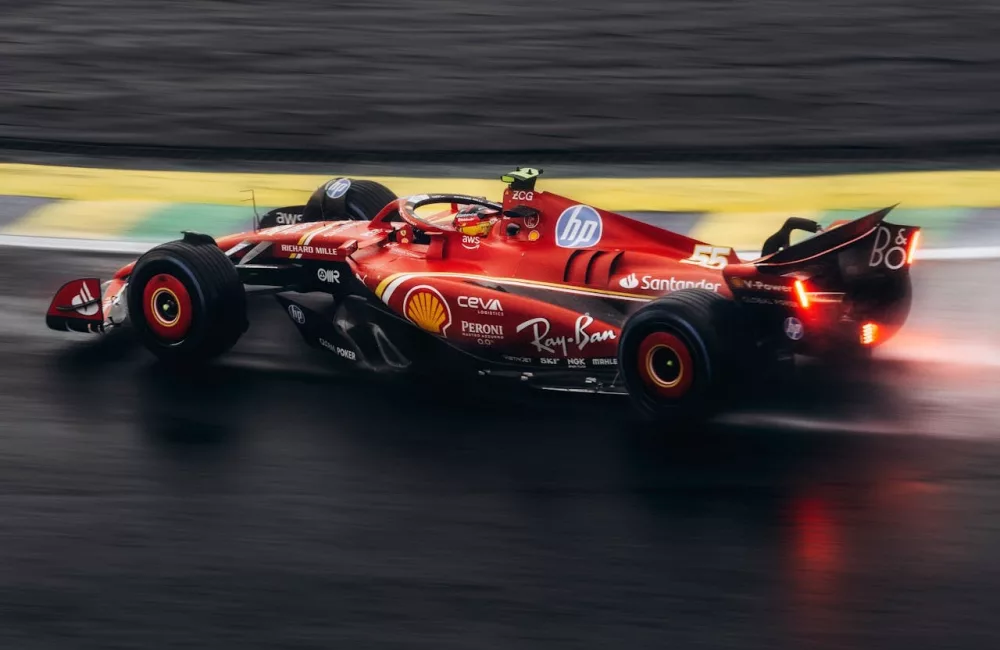The world of motorsport is vast and varied, offering a spectrum of racing styles that cater to different tastes, from the technology-driven circuits of Formula 1 to the raw, high-speed ovals of NASCAR. It’s no surprise that fans of these two titans often find themselves in heated debates about which is superior. However, rather than drawing hard lines in the sand, let’s dive deeper into what makes each sport unique and alluring. Whether you’re a seasoned fan or new to the racing scene, you’ll gain a fresh perspective on these motorsport giants.
The Evolution and History of F1 and NASCAR
Formula 1: A Legacy of Innovation
Formula 1, often seen as the zenith of automotive engineering, traces its roots back to the early 20th century. The inaugural World Championship took place in 1950 at Silverstone, setting the stage for a sport that would continuously push the boundaries of speed and technology. Over the decades, F1 has evolved from relatively simple machines to today’s hyper-complex cars, boasting hybrid power units and intricate aerodynamics.
- Milestones in F1: The introduction of turbocharged engines in the 1980s revolutionized the sport, offering unmatched power. The shift to hybrid technology in 2014 marked another leap forward, focusing on sustainability and efficiency without compromising on performance.
NASCAR: Born from Bootlegging
NASCAR’s origins are as colorful as its races. It began in the southern United States during the Prohibition era, where bootleggers modified their cars to outrun the law. These moonshine runners eventually organized races to showcase their driving prowess, leading to the formation of NASCAR in 1948. Unlike F1’s global reach, NASCAR has maintained a strong American identity, emphasizing powerful engines and close-quarter racing.
- Key Developments in NASCAR: The introduction of the “Car of Tomorrow” in 2007 aimed to improve safety and parity among teams. More recently, the Next Gen car, introduced in 2022, has brought significant changes to aerodynamics and chassis design, enhancing competition.
The Driving Experience: Behind the Wheel
Formula 1: Precision and Perfection
Driving an F1 car is akin to piloting a fighter jet on wheels. The lightweight, carbon fiber construction combined with cutting-edge technology demands an extraordinary level of skill and fitness from drivers. The G-forces experienced during cornering and braking are intense, requiring not just physical strength but also mental acuity.
- Driver Insights: Lewis Hamilton, a seven-time World Champion, often speaks about the mental preparation required for each race, equating the focus needed to that of a top-level chess player anticipating moves several steps ahead.
NASCAR: Grit and Endurance
NASCAR drivers, on the other hand, thrive in a world where endurance and adaptability are key. With races often extending over 500 miles, the ability to maintain concentration and manage tire wear over long stints is crucial. The physical demands are different from F1 but no less challenging, with cockpit temperatures soaring and the constant risk of contact with other cars.
- Driver Insights: Dale Earnhardt Jr., a legend in the sport, highlights the importance of understanding track dynamics and the subtleties of drafting, as these can often be the difference between victory and defeat.
Technology and Innovation
Formula 1: Pushing the Limits
F1 is a technological arms race, with teams investing hundreds of millions of dollars annually to gain even the smallest advantages. The integration of hybrid power units has not only made the cars more efficient but has also introduced a new strategic element with energy recovery systems.
- Innovations: The Drag Reduction System (DRS) was introduced to facilitate overtaking by reducing aerodynamic drag. Teams like Mercedes have pioneered advancements in aerodynamics, often employing wind tunnels and computational fluid dynamics (CFD) to perfect their designs.
NASCAR: Tradition Meets Innovation
While NASCAR may seem more traditional, it has embraced technology in ways that enhance the spectacle without losing its grassroots appeal. The introduction of new composite bodies and the adoption of fuel-injected engines have modernized the sport.
- Innovations: The use of in-car cameras and telemetry provides fans with immersive experiences, while advancements in tire technology have allowed for more strategic racing, where tire management can be as critical as driver skill.
The Fan Experience: Passion and Engagement
Formula 1: A Global Phenomenon
F1’s appeal lies in its global nature, with fans from all continents tuning in to follow their favorite teams and drivers. The sport’s embrace of digital platforms, particularly through social media and streaming services, has broadened its reach. Netflix’s “Drive to Survive” series has been instrumental in attracting a new generation of fans, particularly in markets like the United States.
- Fan Engagement: Live races are grand spectacles, with fan zones, team merchandise, and interactive exhibits enhancing the experience. The paddock club and hospitality areas offer a glimpse into the lavish world of F1, appealing to both hardcore fans and corporate guests.
NASCAR: Community and Loyalty
NASCAR’s strength is its deep-rooted community spirit. Races are not just sporting events; they’re cultural gatherings where fans bond over barbecues and tailgates. The accessibility of drivers and their willingness to engage with fans on a personal level strengthens this connection.
- Fan Engagement: NASCAR events feature interactive fan zones where attendees can get up close with cars and drivers. The tradition of driver meet-and-greets and autograph sessions fosters a sense of inclusivity and loyalty among fans.
Strategic Depth: Calculated Moves vs. Spontaneous Decisions
Formula 1: The Chess Game
In F1, races are often won or lost in the strategy room. Teams meticulously plan pit stops, tire choices, and fuel loads, often using complex simulations to predict race scenarios. The role of race engineers is paramount, with real-time data analysis guiding every decision.
- Example: The 2021 Abu Dhabi Grand Prix, where Red Bull’s strategic pit stop decision during a late safety car period allowed Max Verstappen to clinch the championship in a dramatic final lap.
NASCAR: The Art of Adaptability
NASCAR races are more fluid, with strategies needing constant adjustment to account for caution periods, weather changes, and the dynamics of pack racing. The unpredictability of restrictor plate races, in particular, adds an element of chance that keeps fans on the edge of their seats.
- Example: At the 2020 Daytona 500, Denny Hamlin’s team made crucial strategic calls during overtime restarts, showcasing the need for quick thinking and adaptability in the face of evolving race conditions.
Cultural Impact and Representation
Formula 1: A Global Melting Pot
F1’s international presence ensures a diverse representation of cultures and backgrounds. The sport continues to expand its reach, with new races in places like Saudi Arabia and Miami, reflecting its growing global footprint.
- Cultural Significance: The presence of drivers from various nationalities, such as Lewis Hamilton (UK) and Sergio Perez (Mexico), highlights F1’s cultural diversity and its role in promoting motorsport worldwide.
NASCAR: American Heartbeat
NASCAR represents a quintessentially American tradition, with deep ties to its southern roots. The sport has been working towards greater diversity, with initiatives aimed at increasing minority representation both on and off the track.
- Cultural Significance: The rise of drivers like Bubba Wallace, who advocates for diversity and inclusion within the sport, signifies NASCAR’s ongoing efforts to evolve and broaden its appeal.
Environmental Considerations
Formula 1: Green Racing Revolution
F1 has taken significant strides towards sustainability with its hybrid power units and a commitment to becoming carbon neutral by 2030. The sport is actively researching sustainable fuels and energy-efficient technologies.
- Sustainability Efforts: The use of biofuels and the development of energy-efficient transport logistics are part of F1’s broader environmental strategy, showcasing its commitment to a greener future.
NASCAR: Balancing Tradition with Sustainability
While NASCAR’s V8 engines are synonymous with raw power, the sport is taking steps towards sustainability. Initiatives like recycling tires and using ethanol-blended fuels highlight its environmental efforts.
- Sustainability Efforts: NASCAR’s partnership with the Arbor Day Foundation to plant trees and offset carbon emissions represents its commitment to balancing tradition with environmental responsibility.
The Future of Motorsport: Trends and Predictions
Formula 1: Embracing Change
With the new regulations set for 2026, F1 aims to further level the playing field and enhance competition. The introduction of cost caps and simplified aerodynamics are expected to reduce disparities between teams, making races more competitive.
- Future Outlook: The push towards electric and hybrid technologies will likely continue, with F1 poised to be at the forefront of sustainable motorsport innovation.
NASCAR: Evolution on the Horizon
NASCAR’s Next Gen car has already brought significant changes, and the sport is exploring further innovations, including electrification and alternative race formats. The potential introduction of more road courses and street circuits could diversify the racing calendar.
- Future Outlook: As NASCAR explores international expansion, its adaptability will be key to maintaining relevance in a rapidly changing motorsport landscape.
Ultimately, the allure of both Formula 1 and NASCAR lies in their ability to captivate audiences with thrilling races and compelling narratives. Whether you’re drawn to the high-tech spectacle of F1 or the visceral excitement of NASCAR, both sports offer unique experiences that celebrate the thrill of speed and the spirit of competition. Embracing the differences and appreciating the nuances of each can only enhance our appreciation for the world of motorsport.






